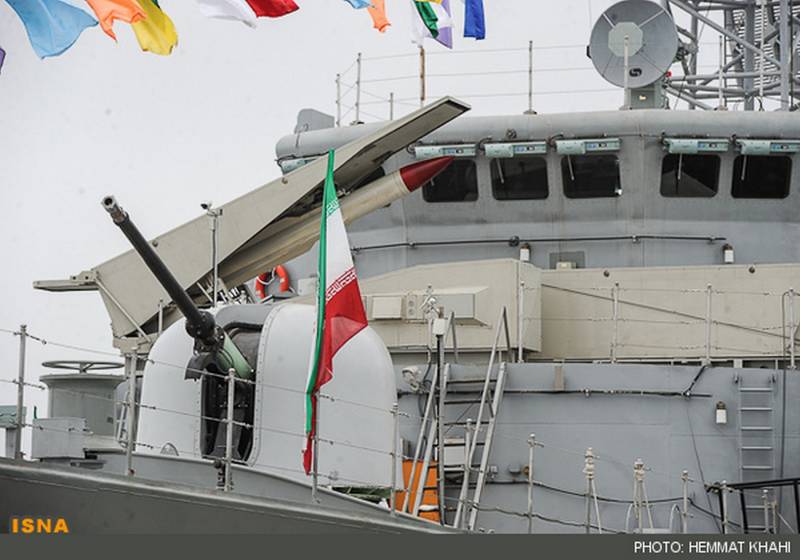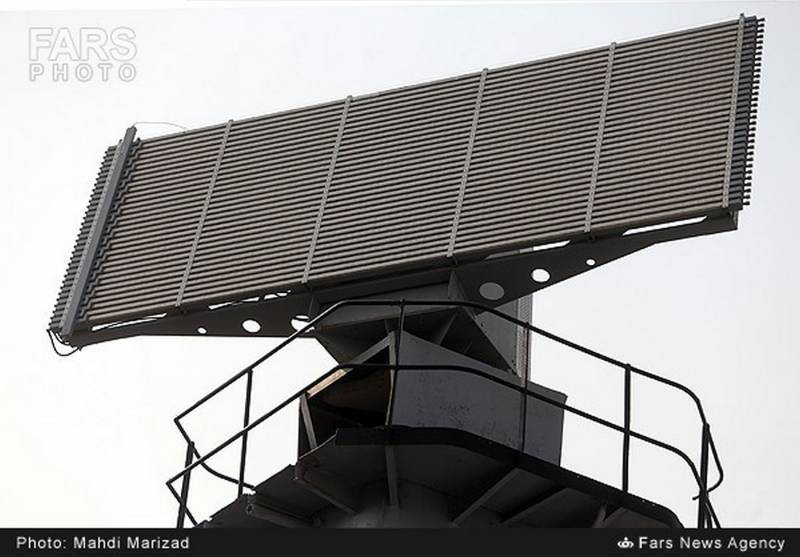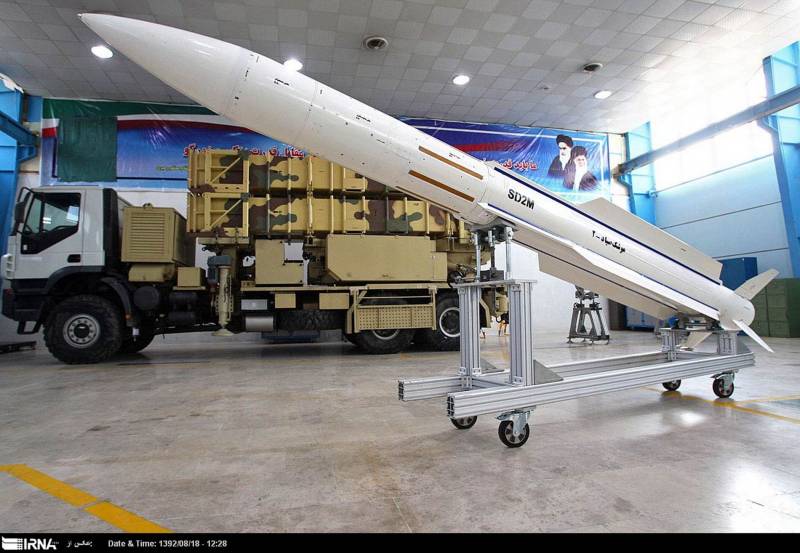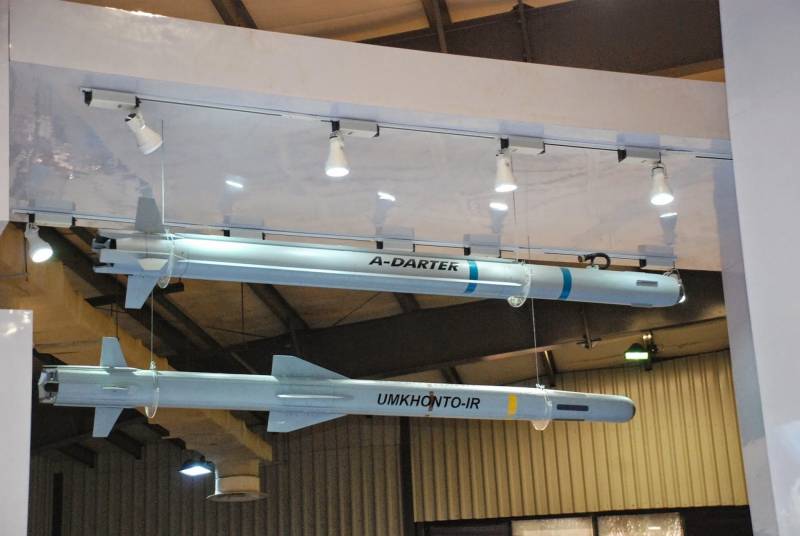Strategic issues and problems of the Iranian Navy. In the first place - naval air defense
VIEW ON REALITY OF MILITARY-TECHNICAL FORMATION OF IRAN
It is well known that the fact of the implementation of the Iranian nuclear program deal was a very unpleasant surprise for the defense ministries of the countries of the West, the states of the Arabian Peninsula (the so-called “Arabian coalition”) and always concerned about the combat potential of the Islamic Republic of Iran. The fact is that before Tehran, in exchange for an ordinary 66% limit on the number of operating gas centrifuges to enrich uranium and reduce nuclear fuel stocks, there is a huge number of opportunities and loopholes for upgrading non-nuclear military potential, which even now is at a level more than - less developed regional superpower. At the same time, the President of the Islamic Republic of Iran, Hassan Rouhani, almost immediately after reaching an agreement, stated that the deal does not mean the termination of research in the field of nuclear technologies. Consequently, against the background of continuing pressure on the IRI by the new US administration, Iran has every right and opportunity after the necessary time has elapsed to exit the “deal.” And before withdrawing from the agreement, Tehran will have time to increase the maximum combat capabilities of those combat arms in which a deep crisis has been observed for two decades.
We are already witnessing this growth on the example of the modernization of the country's air defense system: the stationary radar Ghadir missile attack warning systems (operating in the meter range at distances up to 1100 km) are being built, work is underway on more serious and accurate decimeter / centimeter radars from AFAR type “Najm-802” (analogue of our “Gamma-DE”), and finally, mass production of new “Bavar-373” SAM systems with modern Chinese digital element base, which perfectly complement X-NUMX of our C-4PMU-300 division, is moving with confidence . Against this background, the bizarre, sometimes insane strategies of the Israeli Ministry of Defense to conduct a strategic aerospace operation against Iran look as ridiculous as hopes that the purchase of low-maneuverable, inconspicuous fighters with moderate fighting qualities of F-2I "Adir" will make it easy to "get through" into the airspace of Iran and do some bad things there. The time of the bombing of “Ozirak” has sunk into oblivion, and Tel Aviv will have to take into account all the new operational and strategic realities of Asia Minor.
In our previous works, we returned several times to the analysis of the unsatisfactory condition of the Iranian Air Force, considered various configurations of updating an extremely outdated fleet using contracts with Chinese companies Chengdu and Shenyang, as well as the Russian United Aircraft Corporation machines like J-10A / B, FC-31, Su-35C and MiG-35. It was determined that in order to establish a parity relationship with the developing air forces of the Arabian Coalition and Israel, Tehran should have either an equivalent number of X-NUMX + J-4A (10-500-1) generation X-machines of such advanced 700 ++ transitional machines as the MiG-300. As for the Su-4S and Su-35MKI, the requirements of the Iranian Air Force would fully satisfy the contract for the purchase of 35 - 30 of similar fighters. In addition to the high level training of the Iranian aircrew, even a hundred of these machines can surpass the numerically dominant Air Force of Saudi Arabia, not to mention Qatar and Kuwait. But so far none of the possible contracts have even reached the initial phase of the agreement and long-distance air approaches to the state remain virtually unprotected, and the strike capabilities of the Iranian Air Force barely outnumber similar ones in Kuwait (this will be especially noticeable after the update of the Kuwaiti Air Force with new F / A-150E / F "Super Hornet").
Quite serious problems are also observed with the Iranian Navy. The radar architecture as well as the construction of the superstructures of Iranian surface ships complies with the military shipbuilding technologies of the 70's - 80's. Twentieth century. On most ships, including the Alvand class frigates (3 ship), the Bayandor corvettes, and the Jamaran frigate under the 76 board number (the Moudge project), the outdated AWS-1 type radar with low noise immunity and the "ancient" elemental base of radar information processing. Their range of action for a typical fighter-type air target with an 5 xNUMX EPR is about 2-120 km (subject to the absence of electronic countermeasures). And only the 150 frigate of the “Jamaran” class - “Damavand” and “Sahand” are equipped with modern surveillance radars of the UHF c type “Asr” (analogue of our Frigate-MAE radar). All corvettes and frigates have a large radar signature: constructive solutions aimed at increasing the “stealth” NK characteristics (backfill boards, the minimum number of bulky antenna posts and UVPU) were not found. In terms of detecting the enemy’s modern air attack weapons as more or less worthy ships, the above-mentioned frigates Dawamand and Sahand can be considered, but what about the destruction of these funds? It is here that the main drawback of the surface component of the Iranian Navy emerges - the extremely low capabilities of the air defense missile defense of the ship group. What kind of anti-aircraft missile / artillery complexes equipped Iranian surface combatants?
Three active patrol ships (patrol frigates) of the Alvand class are content: two large-caliber 12,7-mm anti-aircraft guns, three 20-mm automatic anti-aircraft guns Oerlikon 20 mm / 70 (in the series production with 1927 and 1945, they were completed by year). 4,4 km range and altitude - 3 km and one paired 35-mm AP «Oerlikon» 35 mm / 70 in the stern of the ship with a similar aiming range. Judging by the presence on the Alvands of the Sea Hunter-4 naval combat information and control system, the 1х2 35-mm ZU fire should be controlled by specialized centimeter or millimeter radar guidance, but, for example, in the photographs of the frigate 73 Sabalan is good it can be seen that in the gun turret of this anti-aircraft installation there is a niche for calculation, on the basis of which it is easy to draw a conclusion about the low automation of the weapon and the visual guidance with the help of ordinary optical instruments. This gun is unlikely to succeed in destroying even the single “Harpoon” or “Exocet” anti-ship missiles, which are in service with Qatar and the US Navy. The gun’s rate of fire is only 9 shots / sec, which is not enough even to intercept a modern small-sized UAV.
In addition to ineffective anti-aircraft machine guns and artillery, the Alvands also have a Sea Cat short-range anti-aircraft missile system. On these ships, the ZRK is represented by two posts with transmitting antennas of the radio command control linked to the fire control system of the type MRS-3, and therefore the ZRK has 2 target channels. Guidance is carried out according to a binocular optical-electronic reticle, placed on the antenna post. For automatic tracking of the anti-aircraft missile tracer and targets, an additional TV viewer is used. However, this does not save the Iranian frigates from destruction by the enemy's anti-ship missiles, because the Sea Cat Mod.1 missiles have the lowest flight-technical and tactical characteristics against the background of all known short-range missiles. Developed in the distant 1961 year, single-stage “Sea Cat” missiles have extremely small elongation of the hull with a “rotary” wing scheme, as well as a moderately “high-torque” dual-mode solid propellant rocket engine, which ensures a maximum speed of no more than 1150 km / h. This does not leave the "Sea Cat" a single chance in the fight against modern anti-ship and anti-radar missiles. This complex will not cope with precision-guided enemy bombs. Conclusion: “Alvand” class frigates can operate only in the immediate vicinity of home ports on the coast of the Persian Gulf, where the C-300PMU-2 and Tor-M1 complexes are equipped with a reliable UMP-PRO umbrella. When ships are removed from the coast of Iran with an attempt to conduct independent actions, the consequences will be quite predictable.
The next class of warships of the Iranian Navy, which have anti-aircraft missiles on board, are the same Jamaran class frigates. The anti-aircraft potential of these guards can be safely compared with American frigates of the Oliver Perry class. The last two ships of the series are armed with the Fajr medium-range anti-aircraft missile system (analogous to the American SM-1). The SD-2M anti-aircraft missile Fajr, apparently, is unified with the Talash medium-range anti-aircraft missile system, which has been developed in Iran in recent years. The SD-2M “Sayyad” interceptor missile has a constructive similarity with the American RIM-66B and the Chinese HQ-16. In accordance with Iranian sources, its range can be from 70 to 120 km when intercepting at altitudes above 12 km, and speed 4М. The missile is equipped with a semi-active radar homing head, which is illuminated by a centimeter radar of continuous radiation of the STIR type, which is a simplified version of the Ijisov radar searchlight AN / SPG-62. This radar makes it possible to most widely demonstrate the potential of SD-2M anti-aircraft missiles, since the range of STIR operation is about 115 km.
The photos of the frigate "Damavand" clearly show that the Iranian Admiralty takes very seriously the security level of the Sayyad SAM SD-system, placed directly on the deck-mounted launcher. Unlike the open-type Mk-2 US single-beam launcher, the Iranian modification includes a special swivel container with a hydraulically raised upper flap. The thickness of the steel or aluminum sheet of the container can reach 13 - 15 mm, which protects the anti-aircraft missiles and mechanisms of the beam PU from damage that can be caused by detonation of the RCC and RLP equipment. However, this does not negate the fact that Fjar is a single-channel anti-aircraft missile system that can withstand only a single EHV. And the X-NUMX-20 SD-4M rocket ammunition in the rocket cellar cannot inspire much confidence.
The bottom line is: the surface component of the Iranian Navy can not withstand any modern the fleet in front of Asia. The most impressive hidden force remains only for the underwater component, represented by 3 ultra-low-noise diesel-electric submarines of Project 877 Halibut. In the event of a possible regional conflict between Iran and other Asian countries, these very submarines will have a fairly large number of enemy NKs destroyed.
Officially, the Iranian Admiralty has not yet expressed the need for urgent updating of the naval air defense assets of the Iranian Navy. But internal consultations on this issue obviously have a place to be. Yes, and the prerequisites have already appeared. In the second half of March, 2017 appeared quite interesting on the “Tasnim News” resource. news. As it became known, an agreement was reached between the South African company Denel Dynamics and the Ministry of Defense of the Islamic Republic of Iran to prepare a contract to supply the Iranian Armed Forces with a ground modification of the short-range anti-aircraft missile system Umkhonto-IR. Implementation of the transaction (the cost of 118 million dollars) for the sale of several batteries of the complex will be a breakthrough commercial success for the project of the South African company Denel, because during 12 the summer period of Umhonto in service with the South African frigates of the class Valour managed to recognize the excellent combat qualities of the missiles only specialists of the Ministry of Defense of Finland. In 2006, Finland acquired the 6х8 built-in vertical launchers with Unkhonto-IR Mk.2 anti-aircraft guns to equip 4 Patrol boats of the Hamina class and 2 Minzag Hameenmaa patrol boats and conducted several stages of successful tests in the Baltic Sea region.
The interest of the Iranian Armed Forces in the ground version of this complex is extremely clear, because today only 29 of more or less modern self-propelled Tor-M1 air defense systems are in defense of the country’s airspace, which are critically insufficient not only for positional air defense of a huge number of high-tech strategic objects productions, but also to cover the “dead zones” of long-range air defense systems “Bavar-373”. The 9K331 “Top-M1” complex has 4 times smaller target channel (2 targets against 8), and the radio command control of 9Х331 anti-aircraft missiles requires supporting the targeting process right up to the moment of hitting the target. In Umkhonto-IR Mk.2, everything is much more complicated: anti-aircraft guided missiles are equipped with bispectral ICGSN (they work in the 3-5 μm and 8-14 μm bands), which instantly “capture” the near target and switch to the “empty-forget” mode by allowing the computational tools of the LMS to focus on other objectives. Moreover, the advantage over the "Thor" is also observed in terms of better concealment of their own positions. “Tor-М1”, even when using an optical-electronic TV-sighting machine, during combat operations, is forced to transfer to the rocket board a radio command control channel, which will be immediately dialed by the enemy’s electronic reconnaissance equipment. Umhonto, on the other hand, has the ability to attack an airborne object by targeting third-party radar or optoelectronic devices, and in this case no radio correction will be required due to the ICSOS.
The maneuverability of the Umkhonto-IR Mk.2 missiles is approximately at the same or even at a better level than the 9М331 SAM because the former have a gas-jet jet system for deflecting the thrust vector, which allows maneuvering with 40-50 overload units. until the fuel burns out. The choice of the Umkhonto-IR Mk.2 complex by the Iranian Air Force and the Ministry of Defense as a means of the last line of defense of long-range SAM systems and nuclear research facilities is a very wise decision. Even in the most difficult interference situation, in the case of passing a long-range C-300PMU-2 high-precision weapons the enemy, “Umhonto” is quite capable of stopping him in 1 - 20 km from the destination point.
The conclusion of a contract on the Umhonto ground variant may be a direct prerequisite for the preparation of a new deal to acquire the Umkhonto modification for the Iranian Navy. In addition to the anti-aircraft missile with the infrared GOS "Umkhonto-IR Mk.2", this complex involves the use of a rocket with an active radar GOS "Umkhonto-R Mk.2" with a range of 25-30 km. This will make it possible to maintain efficiency even in difficult meteorological conditions, when the use of a “thermal” rocket becomes almost impossible. The Umhonto family interceptor missiles are also more compact, and therefore fit perfectly into the rocket armament architecture of small Iranian frigates of the Alvand and Jamaran classes, as well as the Bayandor corvettes. At the Jamaran-class SC, the built-in Umkhonto launchers on 8 cells can be “squeezed”: between the Fajr-76 X-NUMX artillery turret and front superstructure, before the Fajr-27 artillery mount, and also instead of non-axes. X-NUMX-mm anti-aircraft installation "Oerlikon" 27mm / 20, located on the rear superstructure of the ships. Thus, frigates of this type will be able to carry 20 Umhonto missiles capable of repulsing the “star raids” of enemy anti-ship missiles. There will be volumes for new missiles on other ships of the boat / corvette / frigate class.
The Umkhonto-IR Mk.2 (Spear) missiles have a heavy high-explosive warhead weighing 23 kg and weighing approximately 150 kg and have an intercept height of 10 km and a range 20 km. The maximum flight speed of the rocket comes to 2200 km / h, the “radio” version “Umkhonto-R Mk.2” passes the finishing stage and will be able to intercept the target at an altitude of 12 km and a distance of 30 km. With a similar weight in 165 kg, 9М331 (“Tor-М1”) missile is equipped with the entire 14,5-kilogram warhead and has an accessibility in height of 6 km. In turn, the advantage of our rocket is 1,32 times the high speed of flight (2900 km / h), due to which the "Tor-М1" more effectively intercepts high-speed targets in the distance of 4-6 km. For the Iranian Navy, on the other hand, canal, noise immunity, as well as maneuverability and power of warheads are the basis of the basics, and therefore all the trump cards are in the hands of the South African manufacturer, Denel Dynamics, with their unique Spear.
Meanwhile, with regard to the Iranian contract, a very unpleasant snag has already come about, connected with the permission of the UN Security Council, which the “law-abiding” South African Republic has requested. Obviously, the request from Cape Town was made because of the remaining sanctions, providing for an embargo on the supply of offensive and weapons to Iran. But “Umkhonto-IR Mk.2” refers to purely defensive weapons. Here we can assume that South Africa is simply being reinsured in order to avoid disagreements with Washington, because South Africa understands that the Umkhonto complex will seriously affect the alignment of forces in Asia Minor, reducing to a minimum the effectiveness of high-precision weapons of the American allies - Saudi Arabia and Israel.
Information sources:
http://rbase.new-factoria.ru/news/yuar-zaprosila-razreshenie-sb-oon-na-prodazhu-iranu-zenitnyh-raket-umkhonto
http://bmpd.livejournal.com/657566.html
http://rbase.new-factoria.ru/missile/wobb/torm/torm.shtml
http://nevskii-bastion.ru/jamaran-iran/




Information